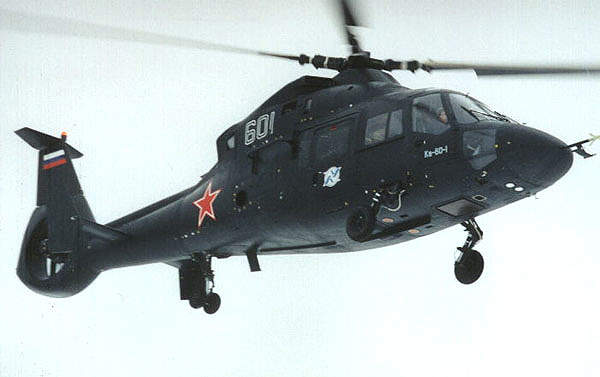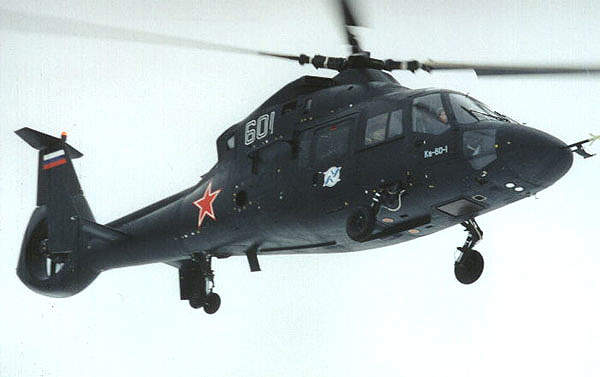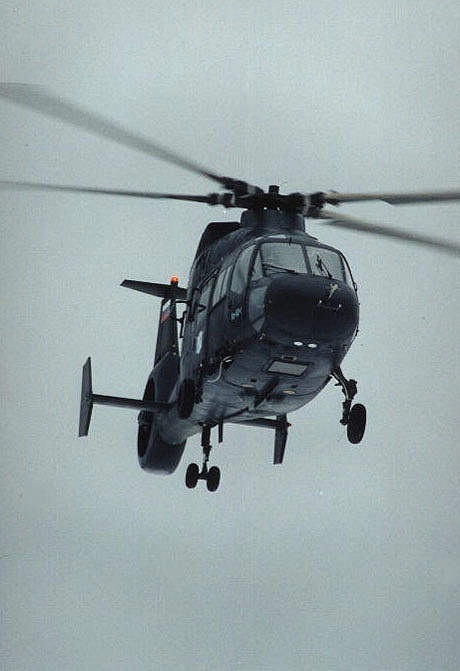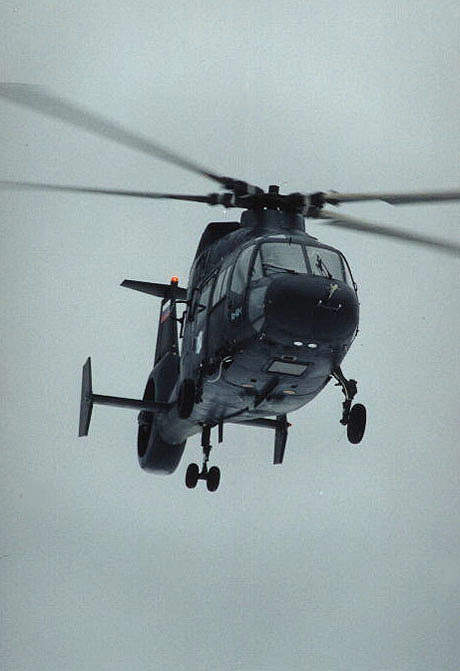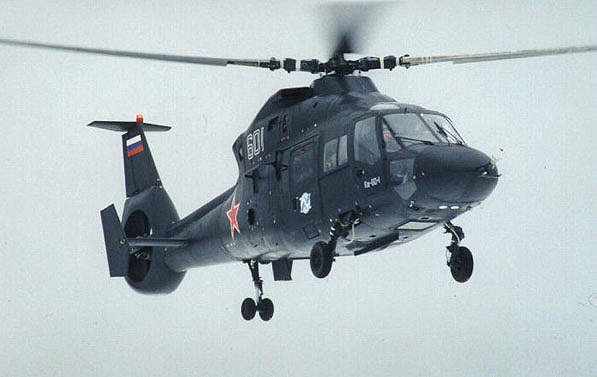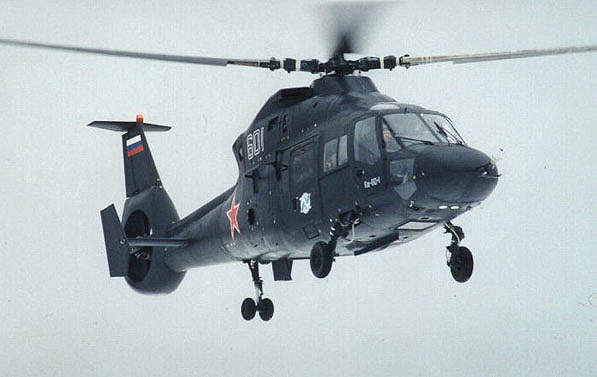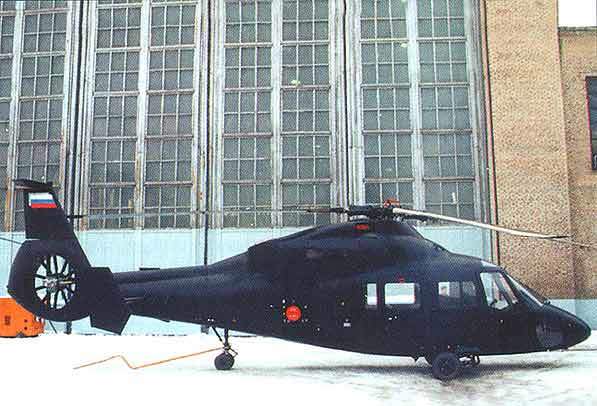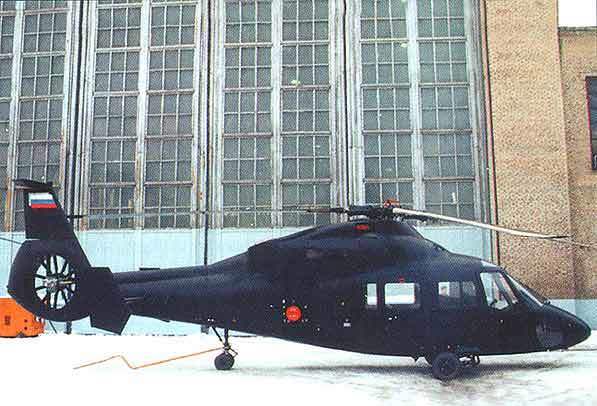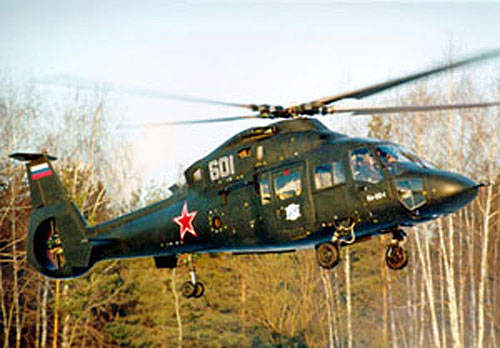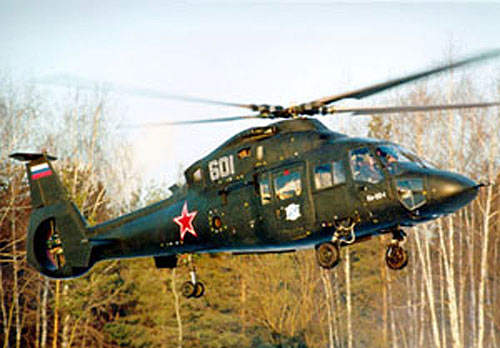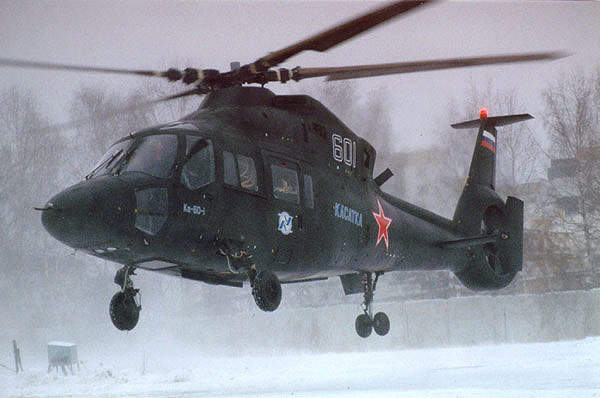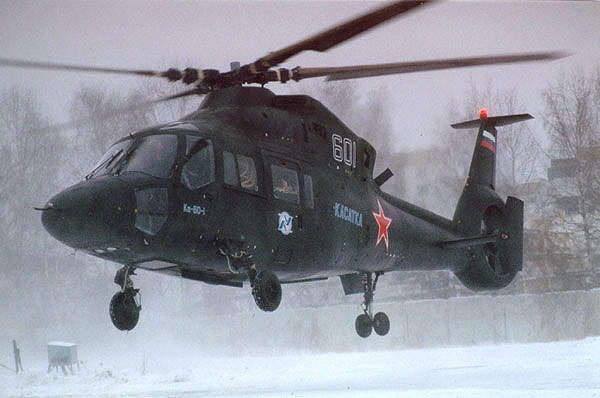The Ka-60 Kasatka or Killer Whale helicopter is a medium weight transport helicopter developed by Kamov and produced at the RSK MiG LAPIK in Lukhovitsky near Moscow. The Ka-60 is designed for carrying troops, weapons and ammunition to the battlefield, evacuation of casualties and cargo transport using the external hook.
Kamov first unveiled the Ka-60 helicopter in 1997 and its first flight took place in 1998. The helicopter went on international display at the MAKS 1999 show held in Moscow. As well as the Ka-60 transport, Kamov has developed a civilian utility variant, the Ka-62.
Ka-60 helicopter design
The Ka-60 has a maximum speed of 300km/h and maximum range with internal fuel of 625km. Composite materials make up about 60% of the helicopter’s structural weight. The four-bladed composite main rotors have swept back tips and a 13.5m diameter. The rotors are resistant to 23mm shells. The tail rotor in the tail ring is a multi-blade design with eleven blades. The fan blades are of carbon reinforced Kevlar.
The Ka-60 Kasatka has an infrared absorbent coating and a low infrared exhaust in order to reduce the thermal signature. A radar absorbent coating has been used to provide a low radar cross section.
The helicopter systems and components have redundancy, the duplicated systems being installed on opposite sides of the fuselage.
Cockpit
The pilot and co-pilot/gunner sit side by side with the pilot on the starboard side. The Ka-60 helicopter can be fitted with dual controls. The Arbalet millimetre wave radar is installed in the nose.
Electronic warfare
The Ka-60 helicopter’s electronic warfare suite includes a Pastel radar warning receiver and an Otklik laser warner.
Weapons
The Ka-60 Kasatka can be armed with two seven round 80mm rocket pods, type B-8V-7, or two guns either 7.62mm or 12.7mm. The selected weapons are suspension mounted from a single piece boom installed transversely in the cabin to the rear of the doors.
Cabin
The cabin can accommodate 16 equipped troops. In a medical evacuation role the helicopter can carry three medical crew and six litters or stretcher patients. The cabin is heated and air-conditioned.
A cargo hook allows external loads to be carried. The maximum external payload is 2,750kg.
Engines
The Ka-60 helicopter is powered by two turboshaft engines, type RKBM RD-600V, built by NPO Saturn. The engines have a standard arrangement of three axial stages plus one centrifugal stage with a free turbine drive and take-off rating of 969kW. The helicopter is offered for export with two General Electric CT7 engines. The fuel tanks are filled with polyurethane foam to reduce the risk of explosion.
The transmission is resistant to 12.7mm shells. The run dry gearboxes allow the pilot the option to fly to a place of safety in the event of the gearboxes being ruptured.
The helicopter is equipped with an Ivchenko auxiliary power unit, type A1-9V APU.
Landing Gear
The helicopter is equipped with retractable reverse-tricycle type landing gear. Shock absorbers are installed on each unit. The main wheels towards the forward section of the fuselage retract inward and upward into the fuselage. The single rear landing unit is twin wheeled and retracts forward into the tailboom.
Optional inflatable pontoons can be fitted for emergency deployment on water.

